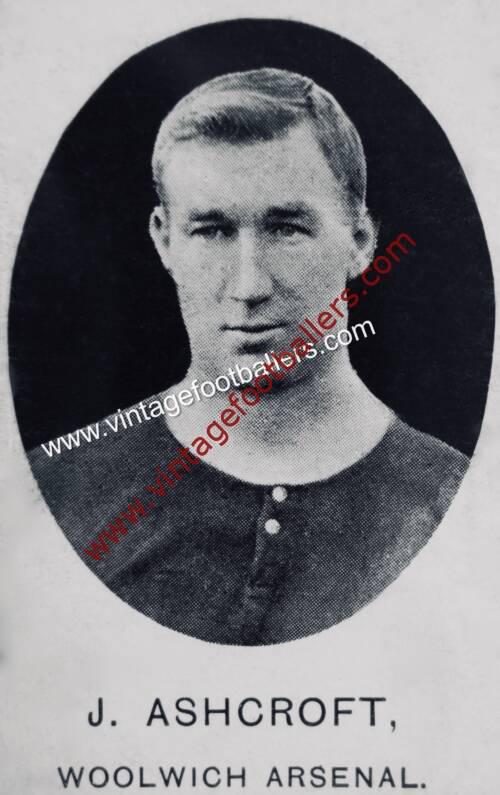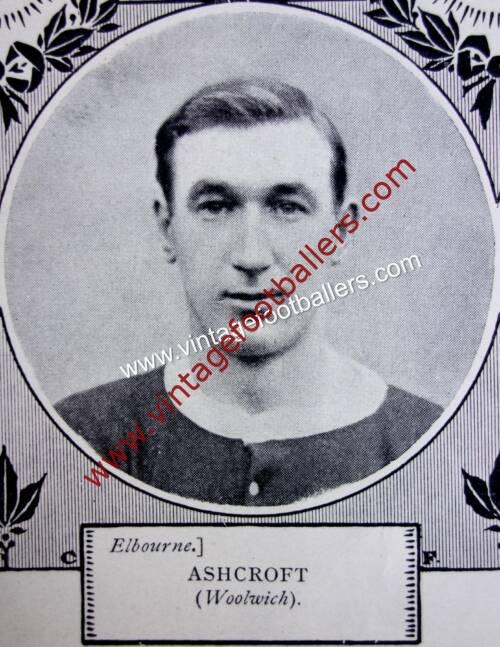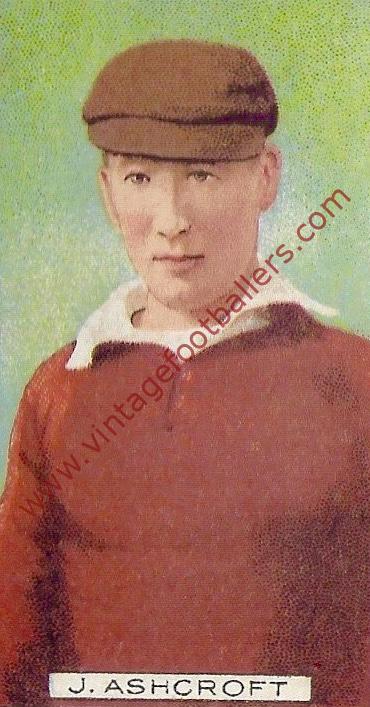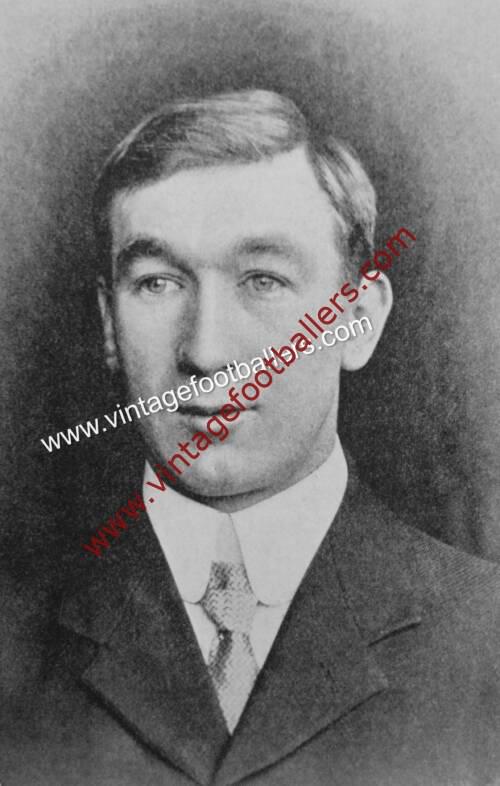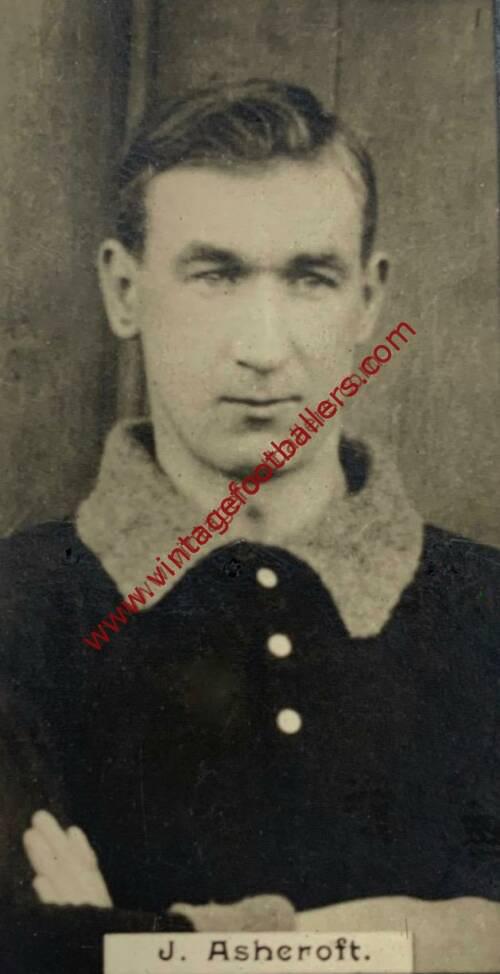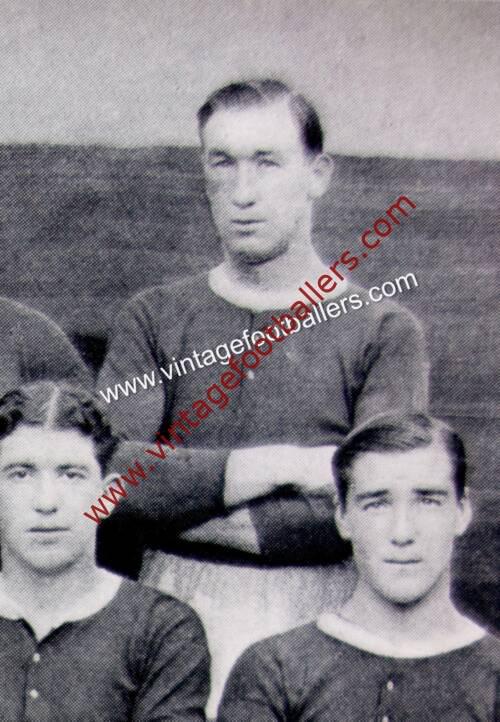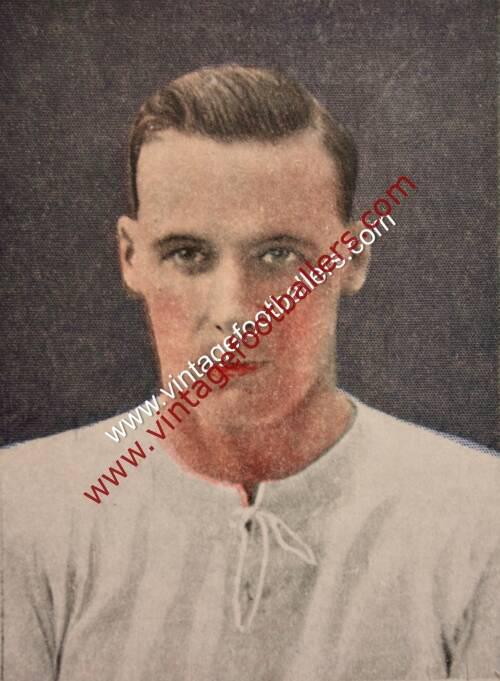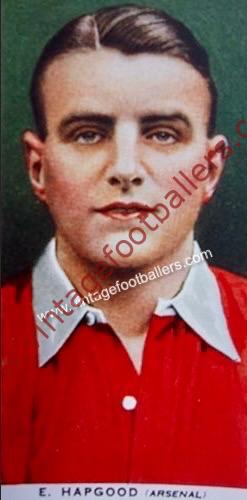Please choose your photo size from the drop down menu below.
If you wish your photo to be framed please select Yes.
Note: 16″x 20″not available in a frame.
Images can also be added to accessories. To order please follow these links
£8.95 – £49.95
In stock
Please choose your photo size from the drop down menu below.
If you wish your photo to be framed please select Yes.
Note: 16″x 20″not available in a frame.
Images can also be added to accessories. To order please follow these links
Goalkeeper Jimmy Ashcroft was born in Liverpool and began his fotball career playing local football for Wilbyn’s United in 1894, Anfield Recreation Club in 1895 and the Garston Copper Works in 1896 before joining hometown First Division club Everton in 1897. However Ashcroft failed to make The Toffees’ first team and after a spell with Southern League club Gravesend United in 1899 he joined Second Division club Arsenal in June 1900. Ashcroft made his Football League debut, replacing regular goalkeeper,Thomas Spicer, in the third match of the season at Burton Swifts in September 1900. He then played in every game in the 1901-02 season and helped the club to their then highest ever League position, fourth in the Second Division. As Jeff Harris points out in Arsenal Who’s Who, Ashcroft let in “only twenty six goals in thirty four games of which he kept seventeen clean sheets which included a run of six games without conceding a goal (which still remains a club record).”
In 1902-03 he was again ever present helping Arsenal to finish in an improved third place. He repeated this achievement in 1903-04. This time he only conceded 22 goals in 34 matches. This included 20 clean sheets and he played a vital role in helping his club win promotion to the First Division as they finished Second Division runners up. Ashcroft played in 154 consecutive games for the club until an injury ended the run in 1904.
Having appeared in two international trial matches, Ashcroft won his first international cap for England against Ireland at The Solitude Ground, Belfast, on 17th February, 1906, becoming Arsenal’s first England international. The match ended in a 5-0 victory. Ashcroft also then kept a clean sheet in the next match against Wales in March. However, in his third appearance for England that April, England lost to Scotland 2-1 at Hampden Park and he never played for his country again, although he did also appear twice for The Football League.
Having remained a near ever present during Arsenal’s first four First Division campaigns, Ashcroft signed for Blackburn Rovers in May 1908 after 303 appearances for The Gunners. Their manager, Robert Middleton, appointed the former Preston North End star, Bob Holmes, as trainer. This had a positive impact on the team as they obtained a fourth place in the League in 1908-09, with Ashcroft ever present. Blackburn also won the Lancashire Cup and the East Lancashire Charity Cup that season.Blackburn continued their good form the following season and by October 1909 they became leaders of the First Division of the Football League. They lost their position in January 1910 and finally finished in 3rd place behind Aston Villa and Liverpool. Blackburn’s 45 points was the best total they had ever accumulated in a season. Blackburn’s defence was outstanding that season. Jimmy Ashcroft was in goal. Bob Crompton and Arthur Cowell were a formidable full back pairing. George Chapman played at centre-half whereas Albert Walmsley and Billy Bradshaw were the wing halfs.
Ellis Crompton, who had the impressive record of scoring 20 goals in 35 games, joined Tottenham Hotspur in 1910 in order to get first team football and Blackburn’s away form that season was disastrous with their only win coming on the last day of the season. Although they won 12 matches at home they could only finish in mid-table. This was very disappointing considering their 3rd and 4th positions in the previous two seasons.
In 1911 Robert Middleton signed Jock Simpson from Falkirk for a fee of £1,800. He joined a foward line that included at different times in the season, Edwin Latheron, George Chapman, Walter Anthony, and Wattie Aitkenhead. Ashcroft lost his regular place from the start of the season and now had to share the goalkeeping position with Alf Robinson, making 11 first team appearances during the campaign between December and March. The defence looked very strong with players like Bob Crompton, Arthur Cowell, Albert Walmsley, Percy Smith and Billy Bradshaw in the side.
The 1911-12 season began badly with Blackburn Rovers losing two of its first three games. Middleton’s decision to move George Chapman from centre half to centre forward was a great success and Blackburn’s form gradually improved and the team went on an unbeaten run that lasted three months. This took them to the top of the League. Despite being defeated by Bolton Wanderers and Arsenal, Blackburn went on another good run and by the end of the season they had three more points than main challengers, Everton. It was the first time in Blackburn’s history that they had won the League Championship.
Ashcroft made his final appearance for Rovers in March 1913 and signed for Lancashire Combination club Tranmere Rovers at the end of the 1912-13 season after 129 appearances for Blackburn Rovers. He played one season for Tranmere during which they won the Lancashire Combination Championship before his retirement. He also went on to play 5 times for Liverpool (coming briefly out of retirement) as a wartime guest in the 1916-17 season, representing them in regional league football after peacetime football was abandoned in 1915 due to the onset of the First World War.
NB This photograph was taken on 8th January 1906 before an Amateurs v Professionals England trial match played at Craven Cottage, Fulham, which the Professionals XI won 1-0.
Amateurs (white shirts): Back Row – PH Farnfield, JG Witherington, CD McIver, HA Nulton
Middle Row – SH Day, Vivian Woodward, Herbert Smith, SS Harris (captain)
Front Row – EGD Wright, TS Rowlandson, GC Vassall
Professionals (striped shirts): Back Row – Jimmy Ashcroft, Joe Walton, Archie Cross, Peter Chambers
Middle Row – Walter Bull, Fred Blackburn, Riley, Fred Threlfall
Front Row – Arthur “Pat” Collins, Tim Coleman, Fred Harrison
| Weight | 0.25 kg |
|---|
